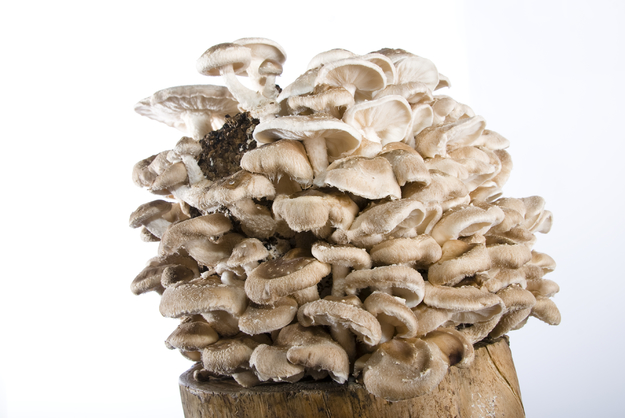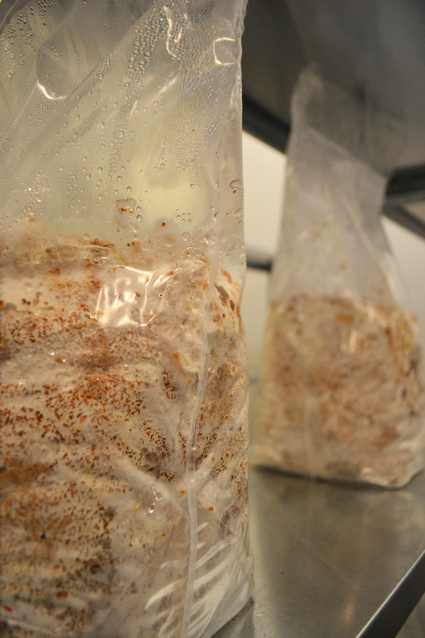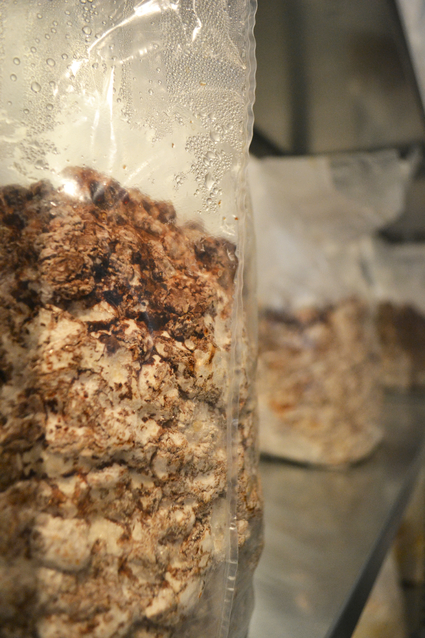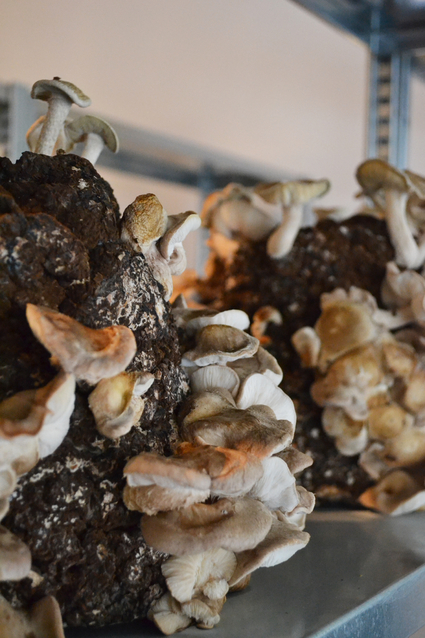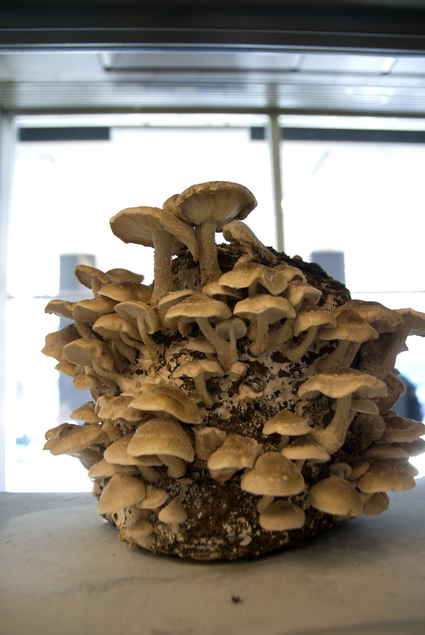About
Shiitake mushrooms have been used medicinally by the Chinese for over 6,000 years. They don't only benefit your immune system, but they strengthen the cardiovascular system, and are a good source of non-animal iron. Also known as the Black Forest mushroom.
Growing Process
Stage 1
A substrate mixture of wood and nutrients has been inoculated with Shiitake mushroom spores. The spores multiply and spread through the substrate. This stage is called “spawn run” and lasts between 35-70 days.
Stage 2
This is the ‘primordia formation’ stage, also called “popcorning”. The root structure of the mushrooms, the mycelium, has now spread through the substrate, forming a hard shell which resembles a brain in its texture. This stage lasts 5-7 days.
Stage 3
The final stage is ‘fruitbody development’, where the mushrooms grow out of the hardened substrate block. Once fruitbodies are seen, the plastic bag is taken off entirely to allow the mushrooms to grow. At this stage the mushrooms begin to release their spores and the fully grown mushrooms can be harvested. This stage lasts between 5-8 days.
